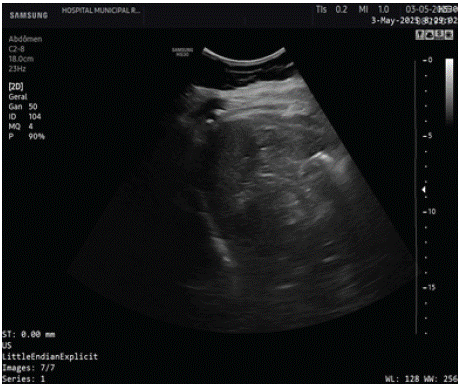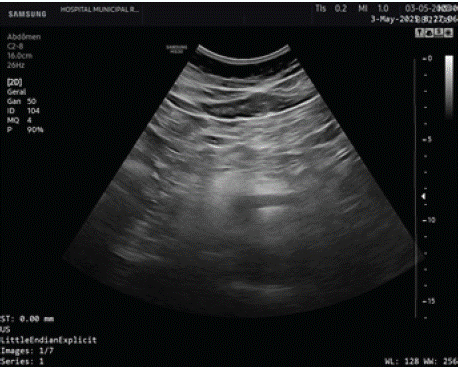
Research Article
Austin J Radiol. 2025; 12(2): 1257.
Beans and Barriers: How Brazil’s Diet and Literacy Gaps Cloud Ultrasound Results
Lobo JR* and Ciattei CAP
Department of Medical Imaging, Rio Saúde, Rio de Janeiro, Brazil
*Corresponding author: Juan Rezende Lobo, Department of Medical Imaging, Rio Saúde, Rio de Janeiro, Brazil Email: deviant.lobo@gmail.com
Received: May 12, 2025 Accepted: June 05, 2025 Published: June 10, 2025
Abstract
This study evaluated patient preparation for abdominal ultrasound in a public healthcare unit in Brazil. Among 88 patients assessed, inadequate preparation and gas-related artifacts were frequently observed. A high proportion of patients lacked oral instructions or were unable to read the written guidance provided. These communication barriers—exacerbated by low literacy and culturally overlooked dietary habits—compromised image quality, particularly in the evaluation of key abdominal structures. The findings emphasize the need for simple, multimodal, and literacy-adapted educational strategies to improve diagnostic outcomes in low-resource settings.
Keywords: Abdominal ultrasound; Patient preparation; Health literacy; Gas artifacts; Patient education
Introduction
Abdominal ultrasound requires adequate patient preparation, including fasting and avoid gas-producing foods such as beans, to minimize bowel gas and optimize image clarity. In many public health systems, especially in underserved communities, instructions may be inadequately delivered or misunderstood, particularly among individuals with low literacy. This study presents an analysis of preparation quality in a public ultrasound unit and explores patientrelated barriers to effective imaging (Figure 1 and 2).

Figure 1: B-mode ultrasound of the right hepatic lobe demonstrating significant image degradation due to gas-related artifacts.

Figure 2: B-mode ultrasound of the pancreas with substantial visualization
impairment caused by intestinal gas artifacts.
Methods
We conducted a prospective observational study from April 14 to April 25, 2025, involving 88 patients undergoing abdominal ultrasound. Data were collected using structured forms completed at the time of examination. The variables assessed included patient age and sex, adequacy of preparation, and, when applicable, the reasons for inadequate preparation. The presence of gas artifacts was documented, along with the specific organs affected, including the gallbladder, liver, spleen, pancreas, kidneys, aorta, appendix, bladder, uterus, prostate, and ovaries. Additionally, we recorded whether patients had received written instructions and whether they were literate (i.e., able to read), as well as whether oral instructions had been provided. All participants were Portuguese speakers, and verbal consent was obtained from each patient prior to inclusion in the study.
Results
Adequate preparation was observed in only 13.5% of patients. Although 63.6% received written instructions, 26.1% of them were unable to read. Furthermore, 68.5% did not receive any form of oral guidance, and gas artifacts were identified in 79.5% of the ultrasound examinations. The gallbladder, pancreas, and aorta were the most commonly affected structures. Additionally, although less directly affected by gas, the bladder, uterus, prostate, and ovaries showed suboptimal evaluation in patients with inadequate preparation.
Discussion
This study reveals critical deficiencies in patient communication. Although written instructions were provided to most patients, a significant proportion could not understand them due to illiteracy, and oral instructions were rarely offered. According to the Instituto Paulo Montenegro, approximately 29% of Brazilians are functionally illiterate, with rates exceeding 50% in lower-income groups [1]. This high prevalence of functional illiteracy limits patients’ ability to follow written medical instructions. Additionally, instructions failed to address the avoidance of gas-producing foods like beans, a dietary staple in Brazil consumed daily by many. A recent study found that regular bean consumption (=5 days/week) declined from 67.5% to 59.5% between 2012 and 2017, with a projected further decrease to 46.9% by 2025, yet beans remain a core component of the traditional Brazilian diet, particularly among lower-income groups [2]. The lack of guidance on avoiding beans, which are gas-producing and consumed once or twice daily by many patients, contributed to gas artifacts that significantly degraded image quality and diagnostic accuracy. These findings highlight the need for accessible, culturally tailored, and multimodal patient education in public health imaging services.
Conclusion
Patient preparation for abdominal ultrasound in this setting was largely inadequate, primarily due to communication failures and low health literacy. Incorporating illustrated guides, audio materials, ensuring verbal explanations and continuous administrative staff training could substantially enhance exam quality and patient outcomes.
References
- Instituto Paulo Montenegro, Ação Educativa. Indicador de Alfabetismo Funcional (INAF) Brasil 2018. São Paulo: Instituto Paulo Montenegro; 2018.
- Granado FS, Maia EG, Mendes LL, Claro RM. Reduction of traditional food consumption in Brazilian diet: trends and forecasting of bean consumption (2007-2030). Public Health Nutr. 2021; 24: 1185-1192.